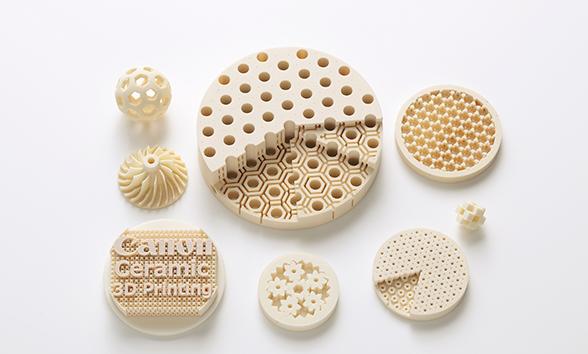
Canon develops ceramic material for 3D printing
Canon Inc. has developed a manufacturing technology for the highly accurate 3D printing of ceramic parts with complex geometries using a proprietary ceramic material for 3D printers.
The 3D printed ceramic parts feature such properties of conventional ceramics as heat and corrosion resistance as well as insulating properties, and are expected to be used in a variety of different fields, including industrial equipment.
3D printers that use such materials as metal and resin, which enable easy prototyping and the production of a variety of parts in small lots, have started to become more common.
However, many existing ceramic materials for 3D printers contain resin and the parts produced using these materials can shrink approximately 20 percent during the post-annealing process, making it difficult to produce ceramic parts with high accuracy.
Canon has developed a new alumina-based ceramic material suited to selective laser melting as well as a new parts production technology.
Through this technology, a 3D printer can be used to stably produce ceramic parts with such complex geometries as hollow and porous structures, which are difficult to achieve through ordinary metal molding or cutting processes.
For example, when creating honeycomb shapes with hexagonal hollows and a diameter of approximately 19 mm, parts can be produced with high accuracy with differences in external dimensions before and after the annealing stage of less than 0.8 percent.
Ceramic parts manufactured using this technology are expected to be used in all kinds of industrial fields, from parts for equipment that demands heat resistance and insulating properties, such as electric furnaces, to parts facing exposure to chemicals that require corrosion resistance.
Canon Group companies, including Canon Inc. and Canon Machinery, are investigating applications for this technology in the prototyping of parts for industrial equipment.
The company plans to expand the use of this technology to such areas as the medical field through the development of more compatible materials to meet an even wider range of prototyping and wide-variety, small-lot needs.


